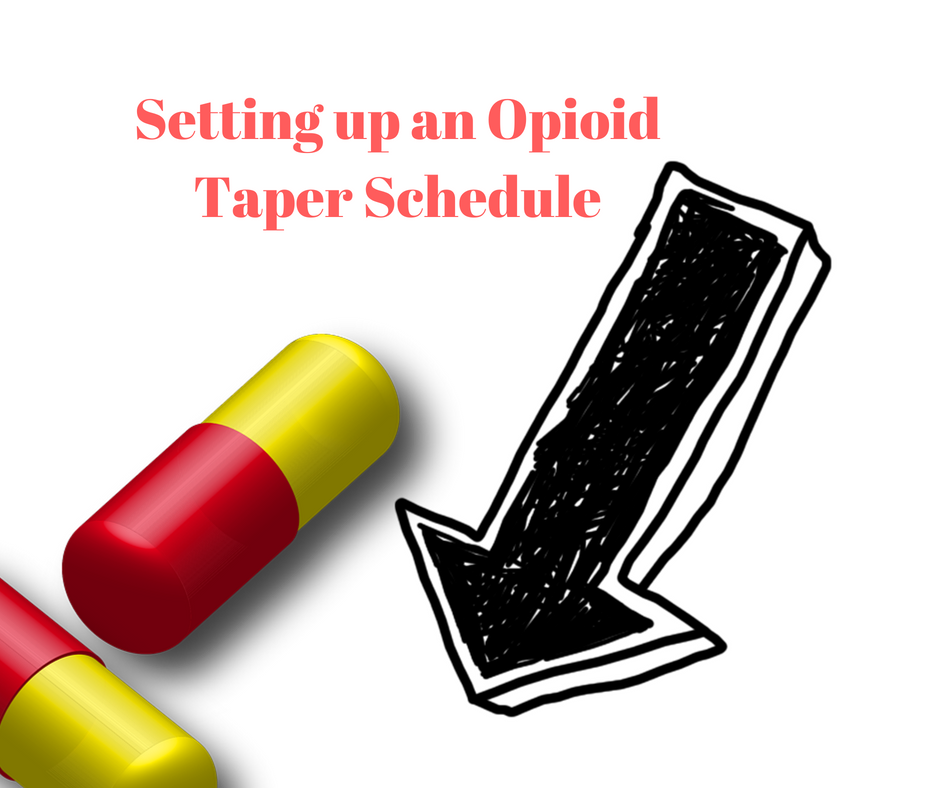Many institutions are working with patients to try to taper off of opioids. Setting up an opioid taper schedule is not something that should be taken lightly. This is a process that I’ve helped with quite a bit so I definitely have an understanding that withdrawal symptoms can be very serious. Nausea, vomiting, cramping, anxiety, sweating, and insomnia are just some of the common withdrawal symptoms that can happen. Here’s a few pearls I’ve learned in setting up an opioid taper schedule.
- How long have they been on opioids? This is one of the first questions I ask patients and try to figure out. The long they have been on a fixed dose, the more likely I will encourage a very slow taper.
- Motivation. This is arguably one of the most challenging aspect to getting a patient on board to tapering opioids. Figuring out what risks the patient is concerned about can help us keep that patient motivated when/if they encounter withdrawal symptoms.
- What dose are they on? We generally reduce opioid doses in the range of 5-25% depending upon clinical circumstances. The higher the dose, we generally do a bigger reduction in terms of morphine milligram equivalents. Let’s take an example; a 25% reduction at 40 mg of oxycodone is 10 mg, while a patient on 200 mg of oxycodone would have a reduction of 50 mg. 50 mg is a pretty big reduction, but I think you get the point that patients who are on higher dosages will likely be able to reduce more initially than a patient who is on chronically low doses. The VA has a really nice opioid tapering tool to look at.
- Risk of withdrawal. If you are working with patients who have been on opioids for a long time, there is probably at least a time or two where they went without the medication or missed some doses. Asking if they have had withdrawal symptoms before and what those symptoms were can help us anticipate problems when setting up an opioid taper schedule.
- Risk of overdose/diversion. In patients at high risk for aberrant behaviors, this gets complicated. Many clinicians will elect to set up more of a rapid opioid taper schedule over a month or two in situations where the patient has given the provider a reason not to trust them.
- Surgery. If patients are in the middle of a health crisis or are having surgery, recognize this fact and show some leniency and common sense around the time of the surgery.
- Mental health. Patients on opioids will often have other mental health diagnosis like anxiety or depression. This should be looked at closely. Withdrawal symptoms can precipitate and exacerbate mental health concerns and needs to be considered. In patients with very unstable situations, large timeframes between reductions may be more appropriate (i.e. 1-3 months)
- Dosage forms. Fentanyl patches can be very challenging in that we step down a lot of morphine equivalents when we go from one patch to the next lower dose. Extending the time frame may be more beneficial and consideration of medications that can help manage the symptoms of withdrawal is important.
Love the blog? Get a free gift simply for following! Over 5,000 medication loving healthcare professional have taken advantage of this!



That is really a nice post on Opioid Taper Schedule, I have been looking for this kind of post since long time and i have found one on your website.Thank You!